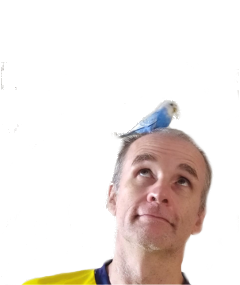A passing problem
Oct. 2, 2015
"Pass! Pass! Pass!" scream parents on the sideline, and so the children do, a frantic toe nudge into the shins of an opposing player. Soccer players learn from a young age that passing is a virtue like "please" and "thank you" and eating your vegetables, even though most would rather just run with the ball. They sometimes even get good at passing through endless pass and run drills. It isn't until much much later, when the less skillful have already been winnowed out of the sport, that they actually learn why to pass. Which is a pity, because at its best, passing is all about patterns and shapes, forms and movement, finding solutions to puzzles, all things which young kids love. And weaving interesting patterns in space with a ball can go a long way to compensating for lack of skill.
jijiojioj
You can see a video of it here: https://streamable.com/ue40. This is passing at its scintillating best: high-speed geometry, jock chess.
It has almost nothing to do with what parents and coaches of youth soccer are shouting about on the sideline when they call out "pass, pass, pass!" to their kids. They might as well be telling them to eat their vegetables, or reminding them that sharing is caring. Why would the extrovert striker who can dribble around everyone on the field give the ball to a lesser teammate halfway through his heroic run? Why would the shy players who hardly touch the ball all game cut short their brief moments of glory? But the shouting is irresistible and they do pass, a grudging toe punt up the field, never back, or even sideways, that is swallowed immediately by the charging mob. Here is what a typical passing game looks like at U8 and some U10.
It doesn't have to be like this, even at a young age. Children love patterns, shapes, geometry. Many love chess. But because soccer has no preset lines of movement, as baseball or Connect-4 do, for example, the patterns are not immediately obvious, and children are not taught to see them. They are taught how to pass, meticulous exercises in using the instep, planting the other foot, keeping eyes on the ball, but never why. At game time, the playing field, for them, is just the space immediately around them in which they execute techniques. Everywhere else is an undifferentiated void, and the other players, including sometimes their own teammates, are just obstacles on their straight line route to the goal.
We encourage children to visualize the whole field from an early age, to recognize arrangements of players, identify space, communicate among themselves, and think several moves in advance. We do this with games we have developed ourselves, games that are fun and have all the adrenalin of normal match, but that require the players -- not just the player with the ball -- to be making constant choices about what they are going to do and where they are going go. Children can continue to play as they always would, charging mindlessly down the middle, but as they play with the rules of these games, they discover for themselves new possibilities and patterns.
Dribble gas
We begin with a discussion about when to dribble and when not to dribble. Most players -- even the ball hogs -- agree that dribbling is relatively slow and risky, and should be used judiciously. With that established, we play a game in which each team has 30 seconds of "dribble gas" to expend as they wish. Every time a player dribbles, the seconds count down. They now have a secondary goal, not to waste gas, and once-silent teams begin communicating frantically, warning each other about their dwindling supplies. Players off the ball hustle into positions of support. And ball hogs begin calling out for that support, even passing sideways or backwards, just to avoid the shame of being the player to empty the tank. Self-interest leads to teamwork, and though the game looks chaotic, it gets players talking and thinking about passing with intent.
Across the lanes
We begin with a discussion about how diagonal passes are the trickiest for defenders to anticipate. If children are familiar with chess, we use the analogy of the bishops, whose diagonal attacks are so difficult to spot. Then, the field is divided with disc cones into three strips of equal length running lengthways down the field. Passing may only take place across these lines. In other words, passes may not be played within a single strip; passer and receiver should be standing on either side of the line. In theory, this restriction makes passing harder. But because it forces players to communicate and coordinate their positions in order to pass, it leads to more deliberate passing. Better, it encourages players to look for lines of movement that are not simple direct lines to goal. They begin to view space in broader terms and look to parts of the field they would otherwise ignore.
Freelanes
Children can't seem to avoid the "clump," the scrum of players crowding the center of the field. They try to dribble through it, kick the ball through it and stand in the middle of it waiting for a pass. It's a many legged monster and a big part of our coaching is directed to breaking up the clump.
The clump
This is an excellent exercise for encouraging children to avoid it. Narrow strips about 1.5 meters wide are created down both wings of the field with disc cones. Pylons are scattered randomly throughout both strips, leaving enough space to dribble comfortably around them. If a player who is standing in one of these lanes receives a pass from a teammate who is standing outside the lane they have five seconds in which to dribble down the lane without an opposing players tackling them. However, if they knock over a pylon, the opposing team gets a free kick.
This exercise naturally encourages dribbling down the wings, but the effect is also noticeable on the players off the ball. When a player is dribbling down the wing, the five seconds of freedom takes some of the pressure off the rest of the team, allowing them to think more clearly about where they should be to support to player with the ball. Some set themselves up in front of the goal, other position themselves strategically along the lane, others even wait in the opposite lane.
This is one of the best team goals our advanced group has ever scored.
Once the children had discovered this pattern they were able to use it effectively in other circumstances, without the safety of the cones.
Here is another beautifully coordinated play that resulted from this exercise. The pass from the goalkeeper to the winger is the first time I have seen our players pass into space, instead of directly to the receiver. The lane silently guided the passer and receiver into seeing this pattern without them having to communicate to each other, and without me having to say anything at all. The striker meanwhile took advantage of the winger's dribbling down the lane to time his own run to goal perfectly, looking over his shoulder and stutter-stepping as he waited for the cross.
With these training methods, children discover a deeper way of thinking about soccer. They are no subsitute for techniques, drills or fitness, of course, but we think it is important that children learn the why of passing and not just the how. It has been shown that children are capable of learning advanced mathematics at young age. We think they are capable of doing the same in soccer.



